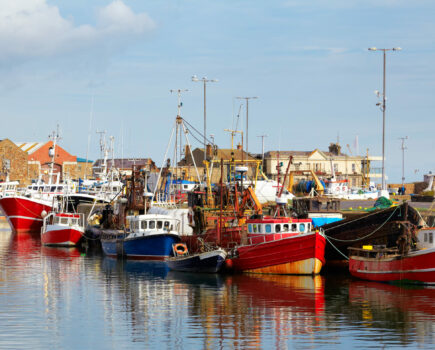The Scottish government announced last week that it has authorised controlled trials of the controversial method, following the conclusion of a consultation between industry, environmental organisations and local communities.
The trials will investigate the size and potential for commercial razor clam production, and ensure fisheries could be operated sustainably with appropriate harvest rates.
Marine Scotland will consult further with partner public bodies, including Scottish Natural Heritage, and with the Scottish fishermen’s associations to ascertain the best locations for trials to take place.
Rural Economy Secretary Fergus Ewing said: “Scotland has a rich and diverse natural environment with a coastline that is world-renowned – not only for its unique habitats but also for high-quality seafood.
“Responses to our consultation and previous research suggest that, where properly applied, electrofishing can be a sustainable and safe method of harvesting razor clams in a way that is less intrusive than traditional methods like dredging.
“We will now undertake scientific trials in specified areas to ensure we fully understand the potential of the industry, and how best to access the economic possibilities in this area.”
Electrofishing for razors involves probes being slowly dragged across the sea bed by a fishing vessel. The electric pulse causes the clams to suddenly emerge from their burrows and they are then collected by divers.
Razor clams (Ensis spp) are commonly known as ‘spoots’ in Scotland. They can currently only be legally harvested by hand, by divers or by different types of dredges, including suction dredges.
Permissions to undertake electrofishing would require the Scottish government to inform, but not seek permission, from the European Commission.
A 2014 Marine Scotland study examining the short-term effects of commercial electrofishing gear on razor clams and other non-target species, concluded that:
● there was limited short-term impact on target and non-target species
● the gear produced almost no impact on the physical environment, unlike legal dredge methods
● the method of capture is highly selective, producing high-quality product with little damage or waste and zero by-catch
● further research on longer-term impacts of the gear is required
● surveys are required to assess the size and magnitude of razor clam populations
Marine Scotland said that while preparations for the trial are under way, existing permissions to land razor clams will continue, ‘subject to any controls that Marine Scotland considers necessary to ensure sustainable harvesting of stocks’.
Landings of razors in Scotland in 2016 were 376t worth £1.9m. In 2015, 350t worth £1.5m, and 2014, 423t value £1.5m.
Razors live in shallow, sandy bays and are found extensively around the Scottish coast.
Electrofishing ban ‘hard to enforce’
Electro-fishing has been illegal in the EU since 1998, but despite this the EU has licensed more than 100, mainly Dutch, beam trawlers to use electro-fishing to fish for sole and plaice in the southern North Sea, reports Tim Oliver.
Thames region fishermen complain bitterly that the method has damaged sole and other stocks and leaves areas barren of fish.
The European Commission tabled a proposal for a new technical conservation regulation in March 2016, which is being considered by the European Parliament and the Council of Ministers. It could remove the prohibition on electrofishing, either generally or in specific circumstances.
Marine Scotland published a report on 2014, on the effects of electrofishing on the survival and recovery of razor clams and non-target species. It concluded that it does not have ‘immediate or short-term lethal effects or prolonged behavioural effects on vertebrate or invertebrate species’. But it did not address the question of long-term sustainability of razor clam populations under various levels of commercial fishing.
Marine Scotland launched a consultation in August last year on whether electrofishing for razor clams should be legalised in Scotland.
It held the consultation in light of recent scientific evidence that suggests electrofishing is potentially more environmentally-friendly than some other traditional fishing methods, such as dredging – including suction dredging – which are more disruptive to the seabed. But there is no guarantee that dredging would stop if electrofishing was legalised.
In 2014, the Scottish government brought in tougher licensing measures to deal with illegal fishing of razors, estimating that about 40 vessels were fishing illegally in Scotland.
In its consultation last year Marine Scotland said: “It is considered likely that the significant majority of fishing for razor clams taking place at present involves the use of the illegal electricity method.”
But is said enforcement was ‘very difficult’ because vessels had to be caught ‘in the act’.
Electrofishing is risky, and people have been killed and seriously injured while electrofishing illegally in unregulated fisheries. But razor clams make big money in Europe and Asia, and in 2014 Marine Scotland, police and other authorities cracked down on a large-scale illegal electrofishery in Argyll.
The organised criminal fishery was believed to be making upwards of £65,000 a day. Police said it was more lucrative than the illegal drugs trade. It was estimated that the illegal boats were taking between 500-600kg of razors a day, compared with around one or two kilograms a day by legal boats. They were shipped from Glasgow airport to Asian markets via Singapore.
Read more news from Fishing News here.








